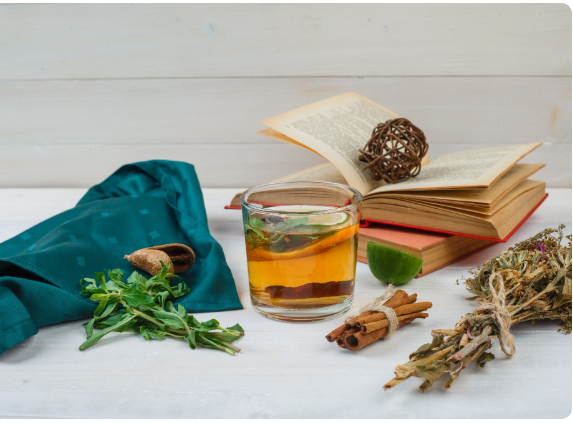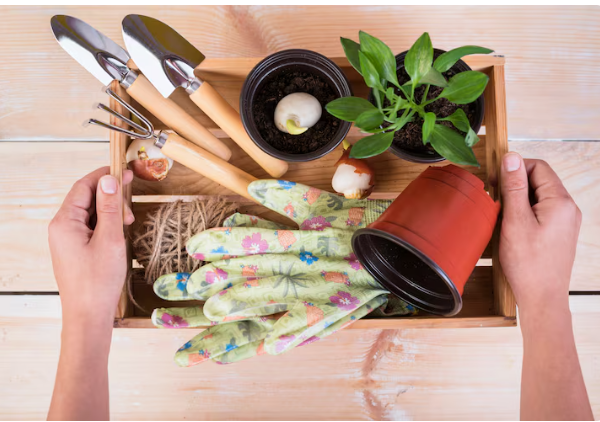Particularly during seasons when symptoms persist obstinately, learning how to use medicinal herbs for colds and flu has become a reassuring touchstone for those who want treatment that feels both natural and profoundly helpful. Herbal remedies feel especially pertinent and comforting since discussions about herbal care have recently become quite similar to those you might hear from athletes, artists, and regular travelers who rely on little routines to keep grounded. Herbs provide a reassuring reminder that mild solace can be found right in a warm mug or a calming bowl of steam as the long nights continue and the winter winds return.
Because ginger’s warmth radiates through the body in a way that feels remarkably efficient against chills and discomfort, it frequently becomes the first cure people reach for. After ten minutes of simmering fresh ginger slices, the resulting tea turns into a very effective cure that relieves chest and throat strain. While honey unites the flavors with a smooth sweetness that is incredibly apparent in intent, lemon instantly brightens the beverage. This mixture soothes the voice noticeably faster than expected, which is why many public speakers and performers rely on it during performance seasons.
| Category | Information |
|---|---|
| Topic | How to Use Medicinal Herbs for Cold and Flu |
| Primary Uses | Teas, steam inhalation, tinctures, immune support |
| Key Herbs | Ginger, peppermint, licorice, elderberry, echinacea, turmeric |
| Benefits | Congestion relief, immune strengthening, inflammation easing |
| Reference | https://www.medicalnewstoday.com |
A cooling alternative is peppermint, which clears clogged sinuses and provides relief that is both abrasive and calming. Properly soaked peppermint releases menthol, which has a refreshingly strong effect on nasal passages. People frequently liken the feeling to strolling through clear mountain air, which is especially helpful when breathing gets difficult. Due to its adaptability, peppermint can be used as a steam component for more severe congestion or as a simple tea for early symptoms.
With a naturally sweet flavor that soothes sensitive tissues, licorice root acts as a soothing balm. This herb, which was formerly mostly linked with ancient medicines, has made its way into contemporary wellness cabinets due to its exceptional dependability throughout persistent coughing fits. Licorice tea, when brewed, becomes a soothing ally on long nights when sleep seems elusive. It gradually but clearly lessens discomfort, fostering a peaceful environment that can greatly lessen stress at night.
Lemon and honey still fulfill their traditional functions as household staples, providing a surprisingly cost-effective blend with calming and energizing properties. Lemon adds vitamin C and a sharp acidity that awakens the senses, while honey has natural antibacterial qualities that help soothe discomfort. As a treatment that has helped families for decades, the blend provides a familiar, reassuring, and remarkably long-lasting feel. Before going to bed, many individuals take a leisurely drink and allow the warmth to comfortingly sink into their chest.
Another incredibly beneficial technique is steam inhalation, particularly when symptoms of the flu and cold tighten the chest or clog the nasal passages. When eucalyptus or sage is added to a bowl of boiling water, the vapors that rise become much more powerful, producing a physical and emotional release. The experience becomes a pocket of calm where the breath significantly improves in a matter of minutes when you lean over the bowl with a towel wrapped overhead. Singers, athletes, and everybody else who depends on powerful respiratory performance love this technique.
Particular attention should be paid to eucalyptus oil because of its powerful, energizing aroma, which cuts through congestion almost immediately. A steam session can be transformed into a clarifying experience with just a few drops, which many people report as incredibly clear and surprisingly energetic. As part of their preparation for the cold season, wellness aficionados frequently include tiny eucalyptus vials in their travel luggage.
Long linked to immune resilience, echinacea is still a particularly cutting-edge herb for early cold and flu treatment. When taken as soon as symptoms appear, studies have shown that it may reduce the length of time that minor illnesses last. Echinacea tinctures have become a mainstay in backstage wellness packs during busy performance seasons, and many frequent travelers take them before travel to boost their immunity. Instead of momentarily disguising discomfort, it supports the body’s normal response, which accounts for its dependability.
With its rich purple color and antiviral reputation, elderberry enters the conversation and provides assistance that is both potent and caring. Its syrup, which tastes pleasantly rich and gives some people noticeably faster recovery times, has become a household staple in many homes. Families frequently take elderberry every day as a preventative step during months when viruses are rife, relying on its potent antioxidants to keep them comfortable and energized.
Turmeric, a consistent anti-inflammatory partner that eases discomfort all over the body, gives cold and flu medicines a bright golden hue. Turmeric is a warming, grounding medicine that promotes a progressive sense of comfort after being blended into warm beverages with black pepper to enhance absorption. Given turmeric’s remarkable resilience-building properties, many wellness-conscious celebrities emphasize its use in their rituals during times of fatigue.
A crucial step in the procedure is the safe use of herbal treatments. Although they provide incredibly powerful comfort, herbs are most successful when used sensibly and in accordance with appropriate medical advice. Consulting a healthcare provider guarantees that underlying issues receive the proper treatment in situations where symptoms worsen or continue to persist. The dose directions for concentrated tinctures, capsules, and extracts must be carefully followed.
Another crucial element is carefully sourcing herbs. Purity can be ensured by using clean-grown or organic herbs, particularly when making teas or steam inhalations. Water quality is also very important. For safety, many herbalists and practitioners advise using boiling or sterilized water, especially when employing medicines that require internal intake or inhalation.
Herbal remedies for colds and the flu are becoming more and more popular, which is indicative of a larger cultural shift toward deliberate wellness that combines traditional wisdom with contemporary insights. Athletes promote herbal recovery methods on social media, and public personalities freely discuss their evening herbal rituals, making natural therapies seem approachable and socially acceptable. The trend shows a remarkably consistent pattern across generations: people are turning back to herbs because they value gentle techniques that promote comfort, sleep, and emotional balance, not because they reject contemporary medicine.
The result is a positive and inspiring portrayal of personal care. The experience feels rooted in connection, whether someone makes elderberry syrup for their kids or stirs ginger into boiling water. When using herbal treatments, healing becomes a gradual process instead of a desperate attempt to find relief. Making tea, breathing in herbal steam, or putting your hands around a hot mug can all be considered forms of medicine in and of itself. These practices are based on patience, presence, and noticeably better health.

